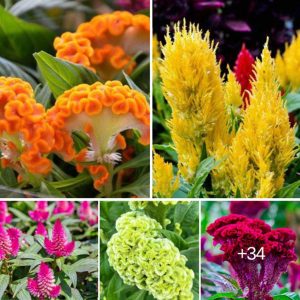Are you searching for some purple perennial flowers to add color to your flower garden this season? Finding the right balance of color for your flower garden is important for every gardener, especially when there are so many options available. In this article, we explore our favorite purple perennial flowers that you can plant in your garden this season.

Choosing the right colors for your garden is crucial to your design and the overall feeling you’re going for. Purple is a color often associated with wealth and royalty, and depending on the shade, it can also represent spirituality or romance. Adding some purple flowers to your garden can bring pops of color, as they contrast well with many other colors in your garden. It’s even better when the flowers are perennial, meaning they return year over year.
Light purple flowers can evoke feelings of peace and calmness, while vibrant pinkish-purples can add some drama. Keep shades in mind when selecting which plants will work best in your garden and where you want to plant them.
Flowers come in different shapes, sizes, and fragrances, especially with our favorite purple perennials. Luckily, there are plenty of different options you can choose from. Below, we share our favorite purple perennials for your garden this season!
1. Allium

Allium plants belong to the onion family and feature flower heads with clusters of florets. The flowers come in a wide range of vibrantly colored blooms, including purple. You can choose from various heights ranging from just a few inches to a few feet tall. Allium flowers are easy to care for if planted in well-drained soil in an area with plenty of sunshine. They are drought-resistant and generally low-maintenance.
2. Anise Hyssop
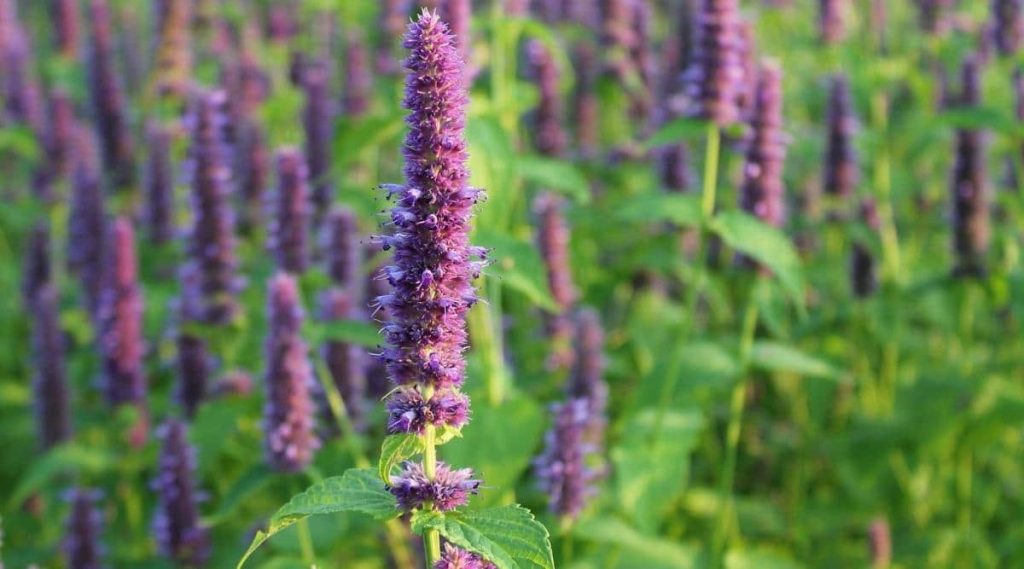
Anise, also known as blue giant hyssop or fragrant giant hyssop, is an herbaceous perennial with bluish-purple flowers that emit a licorice or tarragon-like fragrance. Anise is an edible plant with a licorice flavor and may be used as an herbal supplement. The flowers contain sweet nectar, attracting pollinating insects and hummingbirds. Anise prefers well-drained alkaline soil with a pH of around 6.5 and is relatively drought-resistant.
3. African Daisy
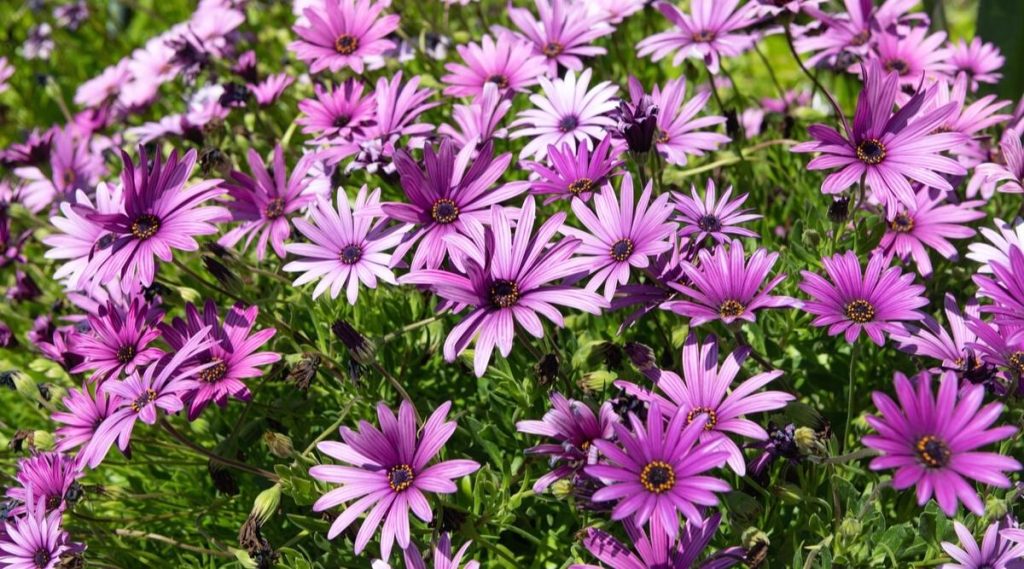
African Daisies are evergreen perennials that produce rich lavender flowers. Depending on the time of year and type of flower, these stunning purple flowers may have a hint of white, pink, or peach faded into the petals. African Daisies bloom in the middle of summer, and once established, they provide vibrant colors from spring through fall. While young, they require regular watering, but once established, they can tolerate periods of drought.
4. Bearded Iris
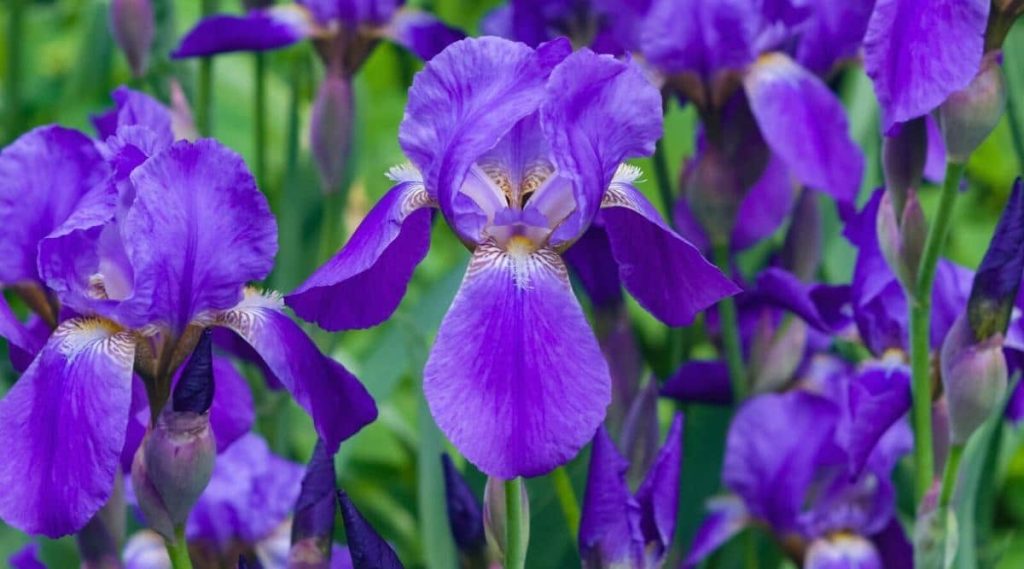
Bearded Iris features vibrant colors, such as royal purple, with a lovely pattern on each petal. These flowers attract butterflies and hummingbirds and are deer-resistant. Bearded Iris blooms best in full sun but can tolerate partial shade. Well-drained humus soil is ideal for planting, and you should keep the soil moist without overwatering. Dividing Bearded Iris plants every three to four years helps prevent overcrowding.
5. Bluebonnet

Bluebonnets are hybrids of lupines and are popular among gardeners for their various bright colors and fast-growing tendencies. These plants thrive with plenty of sunlight, requiring at least six hours of sunlight per day. Bluebonnets are drought-tolerant and don’t like excess moisture, so watering once a week is usually sufficient.
6. Butterfly Bush
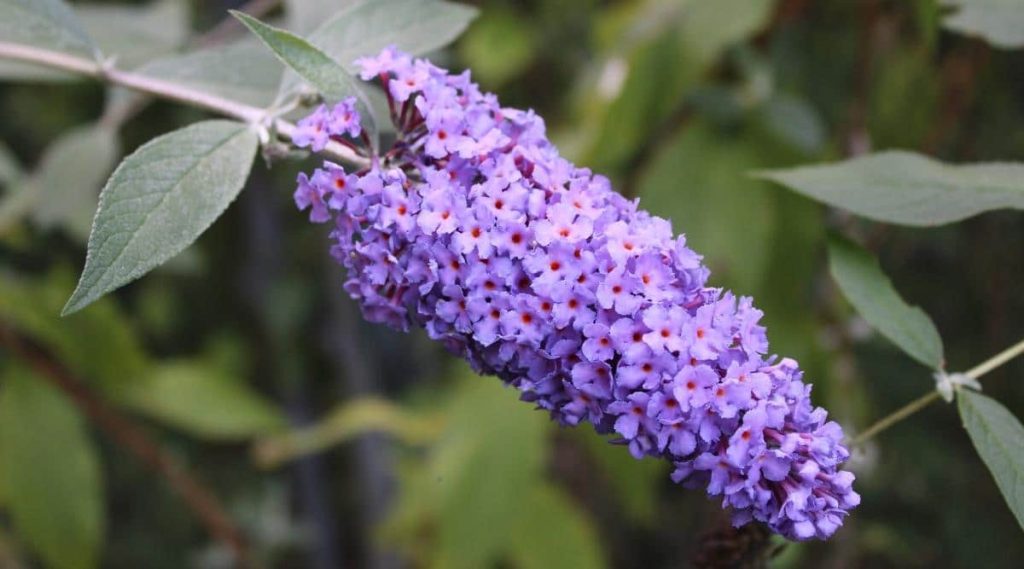
Butterfly bush is a perennial that is easy to grow and produces stunning flower spikes. Available in various colors, including multicolor, Butterfly bushes attract not only butterflies but also hummingbirds. They thrive in full sun but can tolerate partial shade. Butterfly bushes are not picky about soil conditions, as long as the soil is well-drained. They prefer regular weekly watering, either by you or rainfall.
7. Catmint

Catmint is an herbaceous perennial of the mint family, known for its ease of growth and resistance to pests and deer. This low-growing perennial thrives in various environments and can be grown from spring to fall. Catmint has a sweet, minty flavor, and its flowers and leaves can be used to make tea. While young, Catmint requires regular watering, but once established, it can tolerate periods of drought.
8. Chrysanthemums
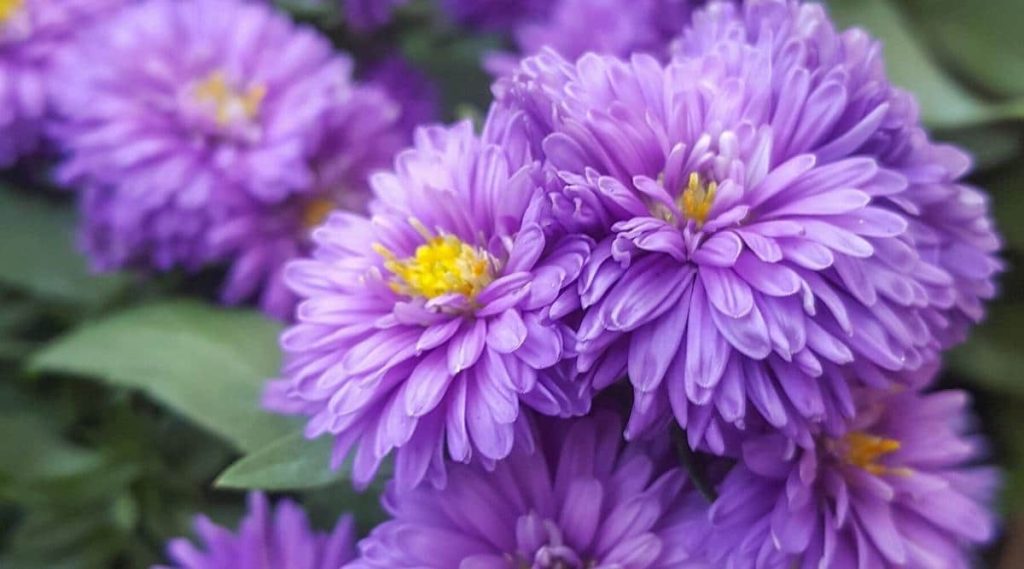
Chrysanthemums, commonly known as mums, feature vibrant clusters of petals on each flower. These perennials are popular in households during the fall and winter months. Mums grow up to 3 feet tall and make great filler plants for adding color in autumn. They need plenty of sunlight and regular watering, making sure not to overwater. For longer enjoyment, purchase mums with unopened buds so they can bloom throughout the season.
9. Clematis

Clematis is an eye-catching perennial that can brighten up any garden. With large flowers reaching up to 8 inches in diameter, this repeat bloomer can flower in both July and September. Clematis belongs to the buttercup family and offers over 300 species with various hybrids. Clematis thrives in full sun with shaded roots in cooler regions and does well in partially shaded areas in hotter regions. Well-drained soil and regular watering are essential for optimal growth.
10. Coneflower
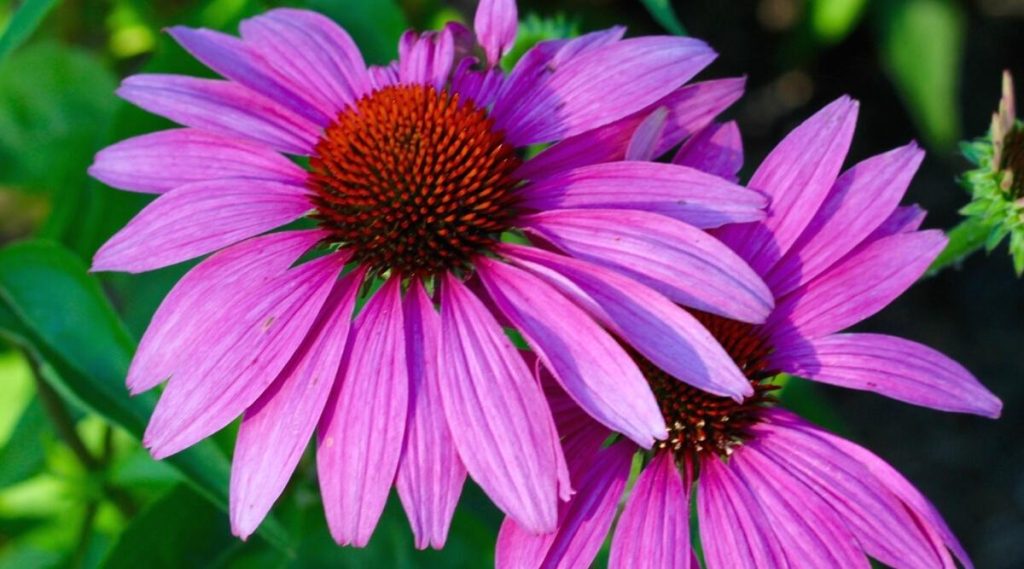
Coneflowers are hardy plants that every gardener adds to their display. Each bloom features multiple tiny flowers that are rich in color, attracting bees, butterflies, and hummingbirds. These perennials bloom early in spring, providing plenty of color. Coneflowers can withstand a variety of temperatures but don’t do well in humid or rainy climates. They prefer various soil types, as long as it doesn’t get too wet. Coneflowers tolerate drought but do best with regular watering until they are established.
11. Coral Bells
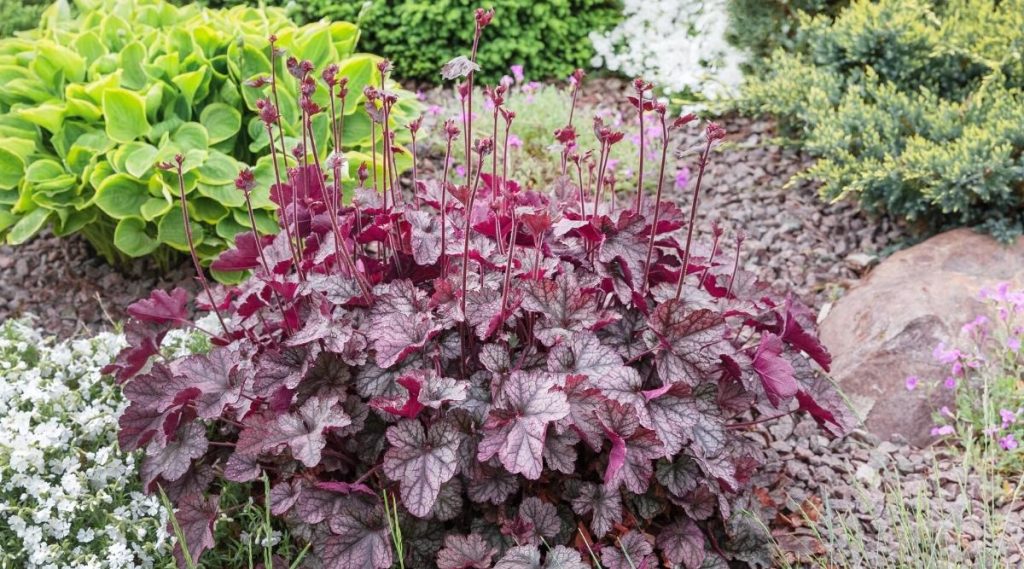
There are hundreds of varieties of Coral Bells, also known as Heuchera. These perennials feature bell-like flowers in a range of colors. Traditionally, the leaves are green, but some varieties have purple, pink, gold, and other colored leaves. Butterflies and hummingbirds love Coral Bells, making them a vibrant addition to your garden. Coral Bells prefer partial shade in hotter regions to prevent the sun from diminishing their bright colors. Plant them in slightly acidic, humus-rich, and well-drained soil. While they appreciate regular watering and evenly moist soil, avoid overwatering as it may cause root rot.
